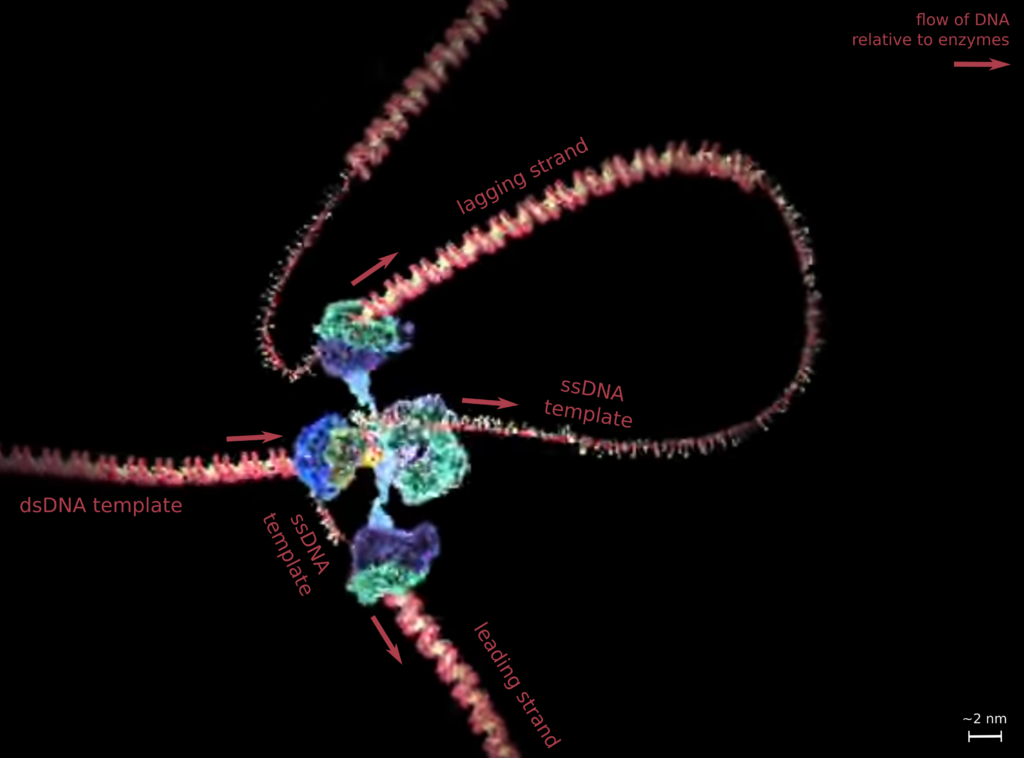I’ve recently posted about these talks on “DNA: The Code of Life” that I found. I really enjoyed them, even though most of the contents were not fundamentally new to me. However, I want to highlight one specific topic that I did learn, and that kinda blew my mind…
I had not even been aware of this particular DNA replication problem, let alone the solution. One part of that replication process is adding nucleosides to match the single-stranded-DNA template and forming phosphodiester bonds in the backbone of the daughter strand. That’s the job of DNA polymerase. It turns out that these highly conserved enzymes only work in one direction: they always traverse the DNA template from ‘3 end to ‘5 end. (In other words, they move along the growing daughter strand in 5’ to ‘3 direction and add nucleosides at the 3’ end.)
That’s pretty straight-forward for one of the daughter strands, called the leading strand. There, the DNA polymerase sits right behind the replication fork and traverses the DNA template in its ‘3 to ‘5 direction. The leading strand “grows” in the same direction, so no problem here.
However, the other daughter strand, called the lagging strand, is anti-parallel to that. It “grows” in ‘5 to 3’ direction of the template strand. But DNA polymerase does not work in that direction! Instead, it has to work backwards on the lagging strand, assembling the daughter strand segment by segment. There’s an intricate machinery of other enzymes that coordinate that, which includes forming temporary loops of DNA. Here’s an illustration of what it looks like:

My description and illustration are not very intuitive. It becomes more clear when watching the video from this original source:
What’s truly weird is that there are no fundamental chemical or physical reasons that would prevent the existence of a polymerase enzyme that works in the other direction. It just seems that a polymerase that traverses the DNA template from ‘3 end to ‘5 end evolved first, alongside the “hack” described above. Since then, different variations of DNA polymerases have evolved in various branches of the tree of life. But they are all variations on the same theme, whereas it would require a major re-haul for a polymerase to work the other way round. I think this is similar to the homochirality observed elsewhere in biology.
There are many more molecular biology videos at that WEHI place. I’ve seem similar ones elsewhere, but I’m surprised how old these are. Looks pretty neat for 2003. It seems that some of that has been used in a Björk video a while back.